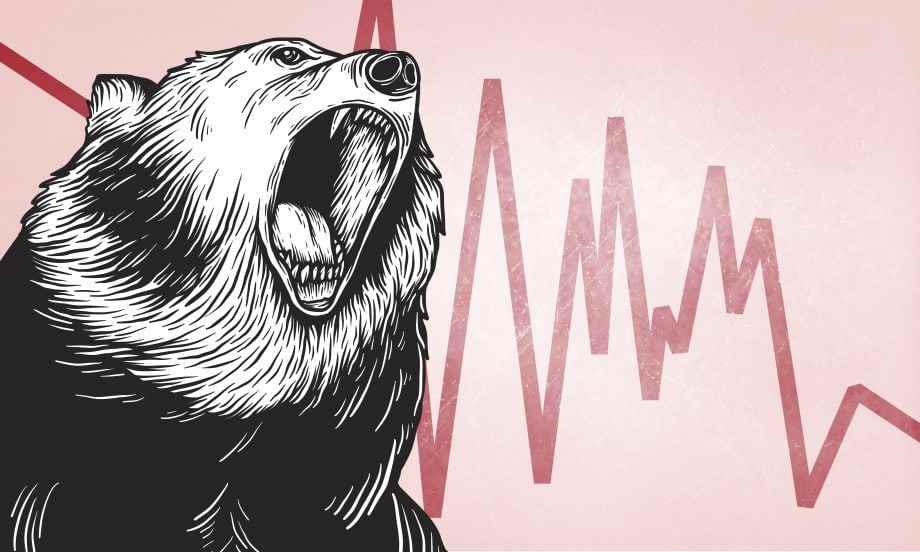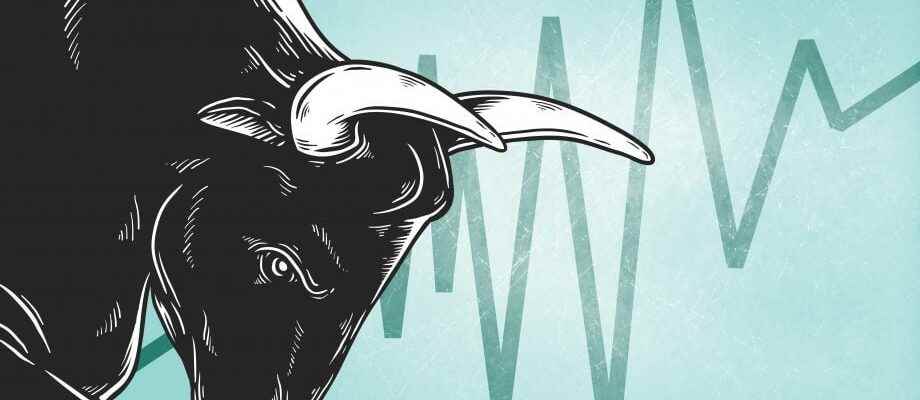When beginners invest, they usually bet on rising prices. This ignores an important aspect of the market, because markets move in different phases. These same natural laws and can be divided into two main phases.
A phase of it is defined by rising prices, it is called Uptrend or bull market. On the other hand, there is a less popular phase. This is where market participants are put through their paces as prices plummet. she calls herself Downtrend or bear market.
But this phase is also absolutely necessary so that the market remains healthy and stable in the long term. Many unhealthy aspects (such as inflated prices, project evaluations that are too high and too much margin in the market) are only flushed out by a long and often brutal bear market.
Participants then (for a variety of reasons, often emotionally) sell their investments. The remaining participants are either too scared to invest or have no capital left. The fact that selling pressure prevails creates a strong imbalance in the market. But what exactly does that mean?
A bear or bull market is an imbalance in price
The market equilibrium results from the common intersection of supply and demand. From the point of view of the supplier, the price therefore determines the quantity produced. On the other hand, the demander, the price controls the consumed or demanded quantity.
In concrete terms, this means: If the price increases, the supply also increases. Vendors produce more of a product and the price goes down. Conversely, when demand increases, the corresponding product becomes rarer and the price increases.
These fluctuations result in so-called trends. These are phases when the price moves in a certain direction (up or down). These are often interrupted by more or less short-term phases of equilibrium.
All of these market behaviors are perceptible over all time periods. If you look at the prize graphs on the 1-minute timeframe, you’ll find them. If you look at the 1-month period, you will find it the same. These are usually major macroeconomic trends that have global implications.
These major trends include the huge stock market boom in 1920, which did not peak until 1929. We experienced a similar bull market between 1990 and 2000 with the internet bubble.
And of course since 2009 with cryptocurrencies. This is also one of the strongest uptrends of our time and contributes to the fact that cryptocurrencies are so popular (and hated when reversed) by many people.
Not only up and down, also sideways
Most trends (bull and bear markets) go a long way accumulation or distribution phase ahead. A market equilibrium has been found here and the price moves within a relatively narrow range.
These long, boring periods are necessary before the price enters a trend. For the clever investor, they are indispensable and also serve to build up or reduce positions.
If the sellers predominate in this price range, this is called distribution. During this phase, market sentiment is still very positive, but is slowly shifting towards neutral. The peak is already set and the price is entering a downtrend.
If the buyers predominate during this time, then that is called accumulation. While this is where the best buying opportunities are, market sentiment is very negative. This is where smart investors build up their positions and benefit from the upcoming bull market in the future.
Bull market: That’s why we love cryptocurrencies
Bull markets are born on pessimism, grow on skepticism, mature on optimism, and die on euphoria.
Sir John Templeton
Arguably the most significant characteristic of a bull market is rising prices. Investors are willing to pay higher prices for assets, which further increases their value. They believe in a strong economy and are therefore willing to take more risks. At the same time, this increased buying activity creates unsustainable price behavior.
The beginning of a bull market (and a bottom in price) is formed when savvy investors see the state of the market and start buying assets. As part of this, the mood swings from negative to neutral.
While savvy investors typically invest during the early bull market, the general public doesn’t jump on the bandwagon until it’s too late. More and more investors start buying the more positive the mood is.
Emotions range from disbelief, caution and hope during the early bull market, to optimism and confidence during the middle phase, to greed and euphoria in the late phase.
The bull markets can last for a very long time (even several years). But everything comes to an end. The parabolic price increase is picking up speed, but is not sustainable. Here are signs of a speculative bubble predicting the impending crash.
So, stock overpricing, margin buying, and purchasing power depletion cause the price to peak. This is also the phase in which the majority of market participants enter the market. The price crashes brutally and most market participants face their first bear market.
Bear Market: Bye Crypto. It was nice with you!

Every bull market masks a variety of sins and so there can be all sorts of problems with the current system that we don’t see until the bear market comes along.
Ron Chernow
A bear market separates the wheat from the chaff because during a bear market investors are faced with falling prices. Here, negative investor sentiment and a lack of confidence dominate the market.
Feelings like optimism and euphoria are a thing of the past and have been replaced by fear, anger and depressed moods. Just like bull markets, bear markets can drag on for years and it can be difficult if not impossible to identify a bottom.
During this period, investors experience significant losses in their portfolios, which can be very painful, both emotionally and financially. Furthermore, this often coincides with economic downturns, making it even more difficult. This is even reinforced by the mainstream. The prevailing opinion here is that the market is doomed.
Most inexperienced investors hold onto their investments during the bear market and don’t want to sell them at a loss. However, a low point is set precisely when these investors sell. This phenomenon is called capitulation – investors give up.
This is also the signal for the experienced market participants. They benefit from fear, panic and uncertainty in the market and have learned to control their emotions. When everyone else is selling, they buy in, hitting the bottom. After a sideways phase (accumulation), the cycle begins again.
Continuing education helps against risk and emotions
Especially in the cryptocurrency landscape, bull and bear markets are very noticeable. Within the last 10 years, the young asset class has gone through numerous complete up and down trends.
As part of these trends, it was not uncommon for cryptocurrencies to appreciate tenfold during a bull market, only to give back 95 percent of the gains during the bear market.
And many beginners underestimate how strongly the bear market can retaliate and how it affects their emotions and state of mind. Especially for newcomers, cryptocurrencies are confusing and confusing, even downright dangerous.
Because of this, education and risk management is a top priority for any user investing in cryptocurrencies. Trading and investing (especially in crypto) involves high risk.
That’s why there are portals like the Binance Academy. All the necessary information for crypto beginners is covered there, so that they can prepare for the different market phases and are also informed about all the basics of blockchain technology.
For example, you will find answers to the most important questions about trading, bitcoin, blockchains, NFTs, metaverse, gaming and much more.
Receive a 10% discount for your newsletter subscription
Applicable to the BTC-ECHO magazine in trial subscription, annual subscription or to the single issue. Register now!
To the newsletter
Sponsored Post
Sponsored posts are paid articles for which the advertiser is solely responsible. BTC-ECHO bears no liability for the promised services or investment recommendations.
The latest issues of BTC-ECHO Magazine
You might also be interested in this
